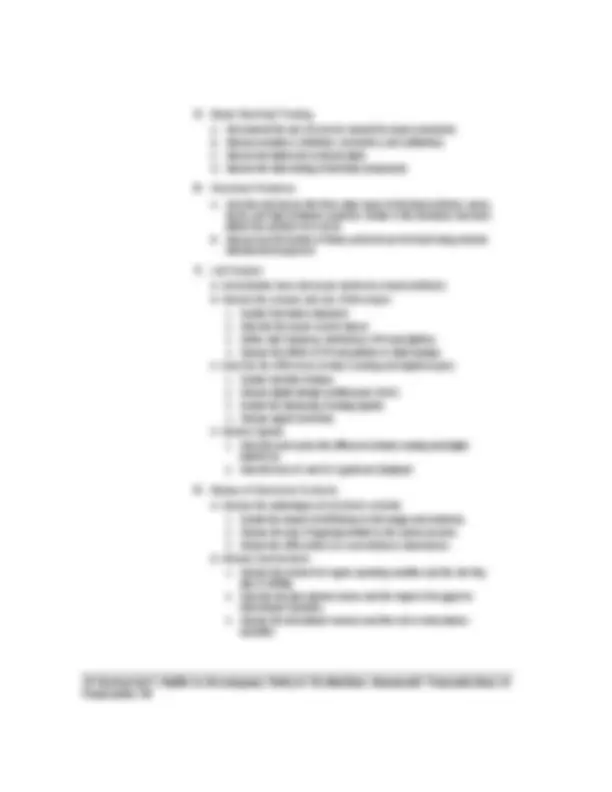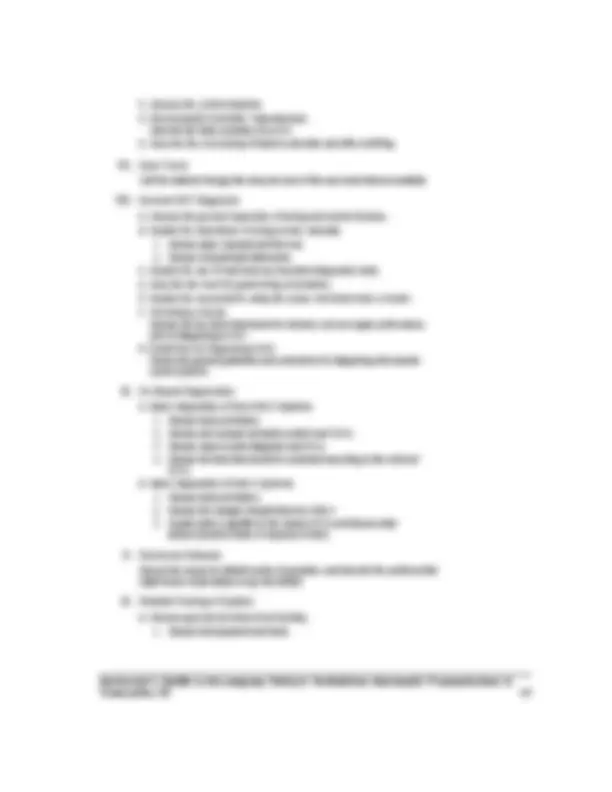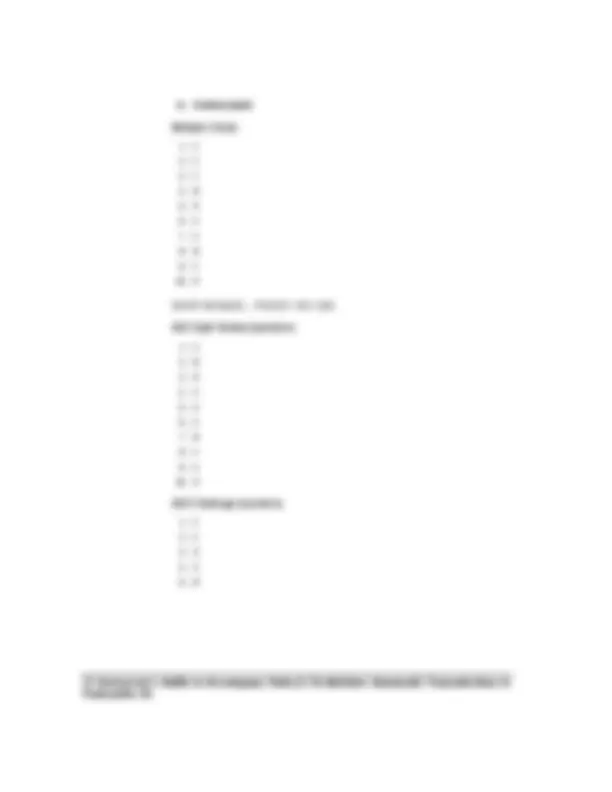






Study with the several resources on Docsity

Earn points by helping other students or get them with a premium plan


Prepare for your exams
Study with the several resources on Docsity

Earn points to download
Earn points by helping other students or get them with a premium plan
Community
Ask the community for help and clear up your study doubts
Discover the best universities in your country according to Docsity users
Free resources
Download our free guides on studying techniques, anxiety management strategies, and thesis advice from Docsity tutors
A chapter from a manual focusing on electrical and electronic controls in automatic transmissions. It covers the basic theories of electricity, ohm's law, magnetism, computers, sensors, and the advantages of electronic controls. The document also explains how to diagnose and repair electronic control systems in automatic transmissions.
Typology: Study notes
1 / 8

This page cannot be seen from the preview
Don't miss anything!





Upon completion and review of this chapter, the student should be able to: Classroom Manual Objectives Explain basic electrical terms. Discuss the basic theories of electricity. Explain the value of Ohm’s Law. Explain how laws of magnetism are used to control automatic transmissions. Explain what a computer is and how it works. Describe the basic types of sensors used in electronically controlled transmission systems. Explain the advantages of using electronic controls for transmission shifting. Explain an elementary shift logic chart. Briefly describe what determines the shift characteristics of each selector lever position. Explain why adaptive learning is an important advancement for electronic control systems. Identify the input and output devices in a typical automatic transmission electronic control system and briefly describe the function of each. Shop Manual Objectives Diagnose electronic control systems and determine needed repairs. Conduct a road test to determine if the fault is electrical or hydraulic. Use common electrical test instruments to locate problems. Conduct preliminary checks on EAT systems and determine needed repairs or
Retrieve trouble codes from common electronically controlled automatic transmissions and determine needed repairs or service. Follow the prescribed diagnostic procedures according to DTC and/or symptom and determine needed repairs or service. Perform converter clutch system tests and determine needed repairs or service. Inspect, test, and replace electrical/electronic switches. Inspect, test, and replace electrical/electronic sensors. Inspect, test, bypass, and replace electrical/electronic solenoids. Inspect, test, adjust, and/or replace transmission related electrical/electronic components.
This chapter in both manuals reviews basic electrical and electronic theory and testing. They also cover the ways to test and check electronic transmission control circuits. Because of the 25
computer controls, it is necessary to understand the operation and the tests that need to be made to diagnose problems in them. These chapters also cover the service that can be made. Explain that most of the transmissions talked about in these chapters are late models.
Classroom Manual, pages 83- Shop Manual, pages 127-
Lecture Outline and Notes
Review the chapter’s objectives.
A. Describe the factors involved in electrical circuits. B. Describe electrical circuit defects. C. Define magnetism and its use in automobiles. D. Discuss circuit controls. 26 Instructor’s Guide to Accompany Today’s Technician: Automatic Transmissions &
A. Recommend the use of a service manual for proper procedures. B. Discuss ammeters, voltmeters, ohmmeters, and multimeters. C. Discuss test lights and continuity lights. D. Discuss the basic testing of electrical components.
A. Describe and discuss the three major types of electrical problems: opens, shorts, and high-resistance problems. Include in the discussion how each affects the operation of a circuit. B. Discuss how the location of these problems can be found using common electrical test equipment.
A. Demonstrate how a lab scope works as a visual voltmeter. B. Discuss the purpose and use of lab scopes.
A. Discuss the advantages of electronic controls.
C. Discuss the control modules. D. Electronically Controlled Transmissions Describe the basic operation of an EAT. E. Describe the processing of data to calculate and affect shifting.
Talk the students through the setup for each of the scan tools that are available.
A. Discuss the general inspection of wiring and control devices. B. Explain the importance of using service manuals.
A. Basic Diagnostics of Non-OBD II Systems
Discuss the reason for default modes of operation, and describe the problems that might cause a transmission to go into default.
A. Discuss general electrical circuit testing.
modulated bi-directional bus system allows the various computers in the vehicle to share information. Multiplexing is a system that allows voltage signals to be shared and to exist on a single wire. The signal has a preset frequency that is accepted only by the intended computer or computers.
5. The solenoids have battery voltage applied to them whenever the ignition is on. The computer completes the ground side of the circuit to activate the solenoids. A solenoid is made of a winding of wire that is wrapped around a movable soft iron core. When current passes through the windings, the resultant magnetic field moves the iron core in or out of the winding. This movement causes the solenoid-controlled valve to open or close. 6. The control unit is programmed to adjust its operating parameters in response to changes within the system, such as component wear. As component wear and shift overlap times increase, the control unit adjusts line pressure by controlling a variable force motor or solenoid to maintain proper shift timing calibrations. 7. Engine speed, throttle position, temperature, engine load, and other typical engine-related inputs are used by the computer to determine the best shift points. 8. Conventional automatic transmissions waste a good amount of the torque produced by the engine through the heat generated by the moving fluid. Also, because gear changes were dependent upon the movement of fluid, up and down shifts were somewhat lazy. Manufacturers could not get the transmissions to respond immediately to the needs of the vehicle without jarring the driver and the vehicle. With the use of electronic controls for transmission operation, the amount of wasted power can be reduced and the overall operation of the transmission can be more responsive with better reliability. Electronic controls also allow for the production of less complicated transmissions, thereby reducing manufacturing and repair costs. The use of electronics eliminates many of the complex circuits and valves in a typical valve body. With this simplicity comes increased reliability, in addition to reduced costs. 9. Honda automatic transmissions are quite unique in the industry because they use constant mesh gears, similar to a manual transmission, to provide for automatic gear changes. When certain combinations of these gears are engaged by clutches, power is transmitted from the main shaft to the countershaft to provide the different gear ranges. 10. The mode switch allows the driver to select a desired shift mode. When the switch is in the Normal position, the transmission automatically shifts gears to achieve maximum fuel economy. Selection of the Power range causes a delay in the shift timing to provide for maximum acceleration.
1. Constant 2. Voltage drop 3. Voltage generating sensors 4. Parallel circuit 5. Receives, stores, processes, communicates 6. Reference voltage sensors, voltage generators 7. On/off, potentiometers, thermistors, pressure 8. Solenoids, motors, mechanical, hydraulic 9. Two shift Instructor’s Guide to Accompany Today’s Technician: Automatic Transmissions &
10. Rotational speeds
1. C 2. C 3. C 4. B 5. D 6. A 7. A 8. B 9. C 10. D S H O P M A N U A L , P A G E S 1 9 1 - 1 9 2
1. A
2. B 3. D 4. A 5. A 6. A 7. B 8. C 9. A 10. D
1. C
2. C 3. D 4. A 5. B 32 Instructor’s Guide to Accompany Today’s Technician: Automatic Transmissions &